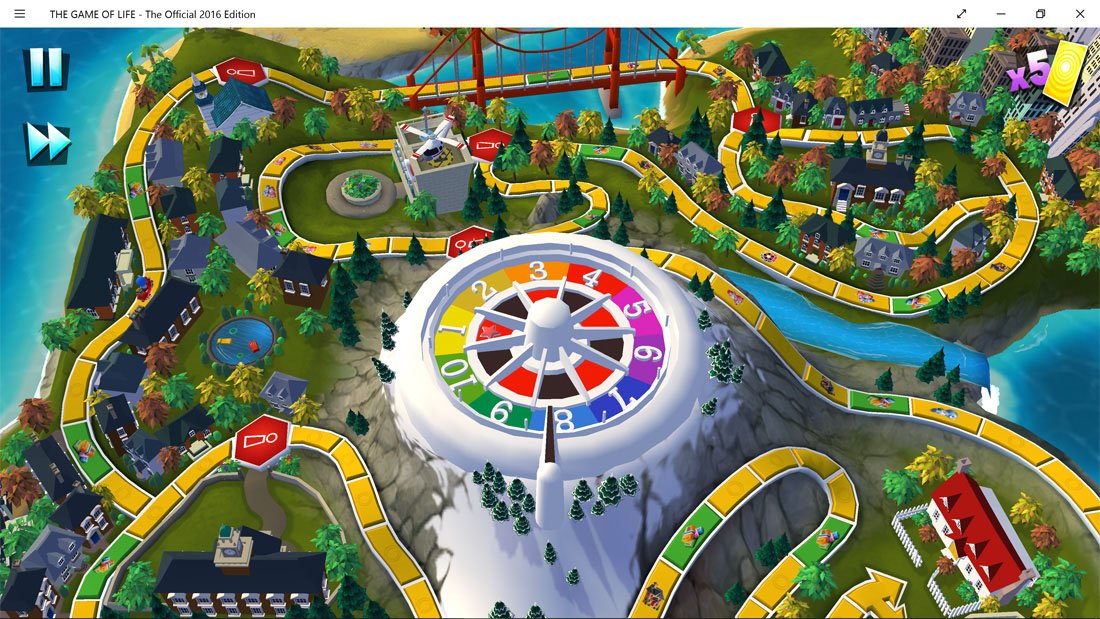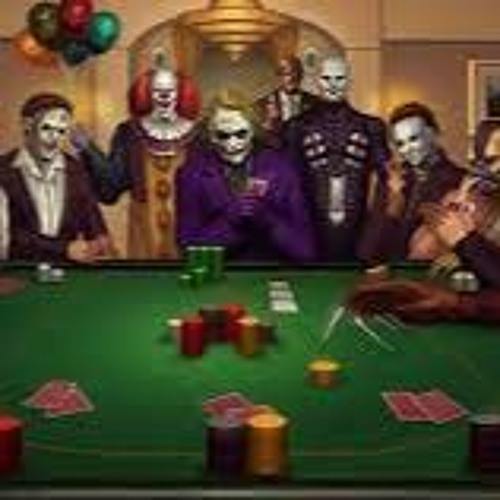The Game of Life is not your typical computer game. It is a cellular automaton, and was invented by Cambridge mathematician John Conway.
NextDay eligible. It’s the classic game of life and career choices, but it’s got a whole new electronic twist! This Electronic Banking version of The Game of Life includes an electronic unit that keeps track of everyone’s funds with a card system. When you get your salary or pay the bank to go to night. THE GAME OF LIFE: 2016 Edition features a new, unique and much-anticipated multiplayer mode. Online matchmaking lets you play in a whole new way online. Match and play against other online players as you all spin and race in the direction of the last yellow tile of life’s road. THIS GAME FEATURES:. ONLINE MULTIPLAYER - Match with other. PLAY THE GAME OF LIFE ONLINE. The game of life is a well known cellular automata where only 2 state of cells comes into play, and with just a few rules demonstrates itself that, based on the initial conditions, it generates a lot of mesmerizing patterns throughout the game field. This game was created by the mathematician John Conway back in. THE GAME OF LIFE 2 Sandy Shores world takes you on a forever holiday to an island where the sun never sets, the skies are always blue and the choices are all yours! For 60 years THE GAME OF LIFE board game has shown us how to win at growing up. Now, THE GAME OF LIFE 2 digital board game brings new choices and crossroads to the mix! CARTER: The classic Game of LIFE was once known as America’s Most Popular Board Game. From its colorful design, to life-like imitations, it has appealed to players of all ages, but as America has changed, so have we. NORA: The original game was last updated in 2005. It’s no surprise that game board sales were at their highest in 2006.
This game became widely known when it was mentioned in an article published by Scientific American in 1970. It consists of a collection of cells which, based on a few mathematical rules, can live, die or multiply. Depending on the initial conditions, the cells form various patterns throughout the course of the game.

Rules
Each cell with one or no neighbors dies, as if by solitude.
Each cell with four or more neighbors dies, as if by overpopulation.
Each cell with two or three neighbors survives.
Each cell with three neighbors becomes populated.
The Controls
Choose a pattern from the lexicon or make one yourself by clicking on the cells. The 'Start' button advances the game by several generations (each new generation corresponding to one iteration of the rules).
More information
In the first video, from Stephen Hawkings’ documentary The Meaning of Life, the rules are explained, in the second, John Conway himself talks about the Game of Life.
The Guardian published a nice article about John Conway.
If you’ve been thinking “I’d like to sell my Tesla,” check out FindMyElectric.com—the ultimate Tesla marketplace, and one of Game of Life’s supporters!
The Game of Life is also supported by Dotcom-Tools, Load View Testing, Driven Coffee Roasters, and Web Hosting Buddy.
Implemented by Edwin Martin <edwin@bitstorm.org>

The game of life is the best-known two-dimensional cellular automaton, invented by John H. Conway and popularized in Martin Gardner's Scientific American column starting in October 1970. The game of life was originally played (i.e., successive generations were produced) by hand with counters, but implementation on a computer greatly increased the ease of exploring patterns.
The life cellular automaton is run by placing a number of filled cells on a two-dimensional grid. Each generation then switches cells on or off depending on the state of the cells that surround it. The rules are defined as follows. All eight of the cells surrounding the current one are checked to see if they are on or not. Any cells that are on are counted, and this count is then used to determine what will happen to the current cell.
1. Death: if the count is less than 2 or greater than 3, the current cell is switched off.
2. Survival: if (a) the count is exactly 2, or (b) the count is exactly 3 and the current cell is on, the current cell is left unchanged.
3. Birth: if the current cell is off and the count is exactly 3, the current cell is switched on.
The game of life is a totalistic cellular automaton, and can be implemented as follows using the built-in command CellularAutomaton, where the initial conditions are specified as a binary matrix and the results for generations through are returned. (Here, corresponds to the initial pattern.)
Weisstein gives an extensive alphabetical tabulation of life forms and terms.
A pattern which does not change from one generation to the next is known as a still life, and is said to have period 1. Several still lifes are illustrated above. The numbers of still lives of cells for , 2, 3, ... are 0, 0, 0, 2, 1, 5, 4, 9, 10, 25, 46, 121, 240, 619, 1353, ... (OEIS A019473).
Patterns that cycle through a set of configurations are called oscillators.
Conway originally believed that no pattern could produce an infinite number of cells, and offered a $50 prize to anyone who could find a counterexample before the end of 1970 (Gardner 1983, p. 216). Many counterexamples were subsequently found, including guns and puffer trains (illustrated above).
A life pattern which has no father pattern is known as a Garden of Eden (for obvious biblical reasons). The first such pattern was not found until 1971, and at least three are now known. It is not, however, known if a pattern exists which has a father pattern, but no grandfather pattern (Gardner 1983, p. 249).
Amazingly, life is a universal cellular automaton, in the sense that it is effectively capable of emulating any cellular automaton, Turing machine, or any other system that can be translated into a system known to be universal. The outlines of a proof for life's universality were given by Berlekamp et al. (1982) and independently by Gosper (Gardner 1983, pp. 250-253). Around 2000, a Turing machine that can be extended to a universal Turing machine was explicitly implemented in life by P. Rendell (Rendell, Adamatzky 2001). While Rendell's machine can be made into a 'true' universal computer simply by making his tape infinite, he neither noted this fact nor provided an actual construction of a universal Turing machine. Subsequently, on November 11, 2002, P. Chapman constructed a life pattern based on D. Hickerson's 'sliding block memory' approach that implements the actions of a universalregister machine. Unlike the finite tape of Rendell's Turing machine, the values in the registers of Chapman's machine are unbounded, making it a true model of universal computation in the game of life. Chapman's construction uses live cells in an area of , and can calculate approximately 20 generations per second on a 400 MHz computer.
More amazingly still, as shown by Wolfram (2002), even one-dimensional cellular automata(in particular, rule 110), can be universal.
Two-dimensional cellular automaton games similar to life but with different rules have been constructed and given the names HexLife and HighLife. HashLife is a life algorithm that achieves remarkable speed by storing subpatterns in a hash table and using them to skip forward, sometimes thousands of generations at a time.
SEE ALSO:Cellular Automaton, Larger than Life, Rule 110, Totalistic Cellular Automaton, Universal Cellular Automaton, UniversalityREFERENCES:Adamatzky, A. (Ed.). Collision Based Computing.Mult.-Valued Log.6,pp. 397-514, 2001. Yverdon: Gordon and Breach, 2001.
Bays, C. 'A Note on the Game of Life in Hexagonal and Pentagonal Tessellations.'Complex Systems15, 245-252, 2005.
Berlekamp, E. R.; Conway, J. H.; and Guy, R. K. 'What Is Life?' Ch. 25 in Winning Ways for Your Mathematical Plays, Vol. 2: Games in Particular. London: Academic Press, 1982.
Callahan, P. 'Patterns, Programs, and Links for Conway's Game of Life.'https://www.radicaleye.com/lifepage/.
Chapman, P. 'Life Universal Computer.' https://www.igblan.com/ca/.
Flammenkamp, A. 'Game of Life.' https://www.uni-bielefeld.de/~achim/gol.html.
'The Game of Life.' Math Horizons. p. 9, Spring 1994.
Gardner, M. 'The Game of Life, Parts I-III.' Chs. 20-22 in Wheels,Life, and other Mathematical Amusements. New York: W. H. Freeman, 1983.

Hensel, A. 'PC Life Distribution.' https://www.mindspring.com/~alanh/lifep.zip.
Hensel, A. 'Conway's Game of Life.' Includes a Java applet for the Gameof Life. https://www.ibiblio.org/lifepatterns/.
Koenig, H. 'Game of Life Information.' https://pentadecathlon.com/lifeInfo.php.
McIntosh, H. V. 'Life.' https://www.cs.cinvestav.mx/mcintosh/oldweb/life.html
Poundstone, W. The Recursive Universe: Cosmic Complexity and the Limits of Scientific Knowledge. New York: Morrow, 1985.
Rendell, P. 'This Is a Turing Machine Implemented in Conway's Game of Life.'https://www.rendell.uk.co/gol/tm.htm.
Resnick, M. and Silverman, B. 'A Zoo of Life Forms.' https://lcs.www.media.mit.edu/groups/el/projects/emergence/life-zoo.html.
Sloane, N. J. A. Sequence A019473in 'The On-Line Encyclopedia of Integer Sequences.'
Toffoli, T. and Margolus, N. Cellular Automata Machines: A New Environment for Modeling. Cambridge, MA: MIT Press, 1987.

Wainwright, R. T. 'LifeLine.' https://members.aol.com/life1ine/life/lifepage.htm.
Wainwright, R. T. LifeLine: A Quarterly Newsletter for Enthusiasts of JohnConway's Game of Life. Nos. 1-11, 1971-1973.
The Game Of Life Online Board Game
Weisstein, E. W. 'Eric Weisstein's Encyclopedia of the Game of Life.'https://www.ericweisstein.com/encyclopedias/life/.
Wolfram, S. ANew Kind of Science. Champaign, IL: Wolfram Media, 2002.
Referenced on Wolfram|Alpha: Game of LifeThe Game Of Life Online Conway
CITE THIS AS:The Game Of Life Online
Weisstein, Eric W. 'Game of Life.' FromMathWorld--A Wolfram Web Resource. https://mathworld.wolfram.com/GameofLife.html